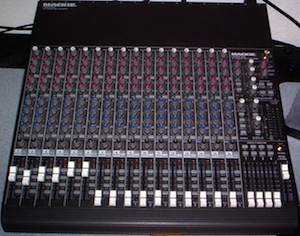Plus Advent Calendar Door #21: How many dimensions are there?
On this, the 21st day of advent, we revisit on of our favourite answers to the questions you asked in our Science fiction, science fact project. You told us that you wanted to know how many dimensions there are, and we asked theoretical physicist David Berman.
What do we mean by "dimension"? An intuitive description of dimensions is that it's the ways in which we can move – up and down, left and right, forward and backwards – which leads us to believe we live in a three-dimensional world.

35th Street and 10th Avenue – a two dimensions address in New York.
Let's think about what this means in terms of giving someone an address. You can specify where you are in two dimensions. For example in New York you'd say "on 35th Street and 10th Avenue", a simple two dimensional address of how many blocks north-south and how many blocks east-west you are.
But what if you are on a particular floor of a tall office block? Then you'd have to say "5th floor, on 35th Street and 10th Avenue". You have specified three things – how far north or south, how far east or west, and how far up – so you have given three coordinates, specifying a point in three-dimensional space.
In fact we are used to living in four dimensions. If you are arranging a meeting then you need to give one more piece of information: the time of the meeting, say 3pm. With four coordinates you can describe any event. We don't tend to clump time with the spatial dimensions but if you think about it, any event really happens in a spacetime with four dimensions. You can measure differences in time just like you can measure differences in space – we measure differences in space with a ruler and we measure differences in time with a clock. So anything you can think of in terms of space you can think of in terms of time.
We can learn a lesson from this: our human perception of dimensions is limited. We only perceive three dimensions. We can understand that time is an extra dimension, an extra location for any event, but we don't see time in the same way. We experience it very differently from spatial dimensions as human beings. This hints that human perceptions of things may not be the end of the story in terms of what's possible.

A point in 16-dimensional space
Mathematically the number of dimensions is just the number of coordinates you need to specify a point. We're familiar with specifying points in four-dimensional spacetime, but can you imagine a space where you need five bits of information? Or six? Or seven…? Mathematicians regularly work in higher dimensional spaces, but they are not the only ones. For example if you're a sound mixer making music you might be working with 12, 24, or even 128 tracks. At each moment in the music each of the, say, 24 tracks has a specific volume, defining a point in a 24-dimensional space of sound. The number of dimensions is just the number of bits of information you need to specify a point.
Now you've got a clearer idea of what a dimension is, read the rest of David Berman's two-part article to find out how many dimensions there are!
This year's advent calendar was inspired by our work on the documentary series, Universe Unravelled, which explores the work done by researchers at the Stephen Hawking Centre for Theoretical Cosmology and is available on discovery+. Return to the 2020 Plus Advent Calendar.